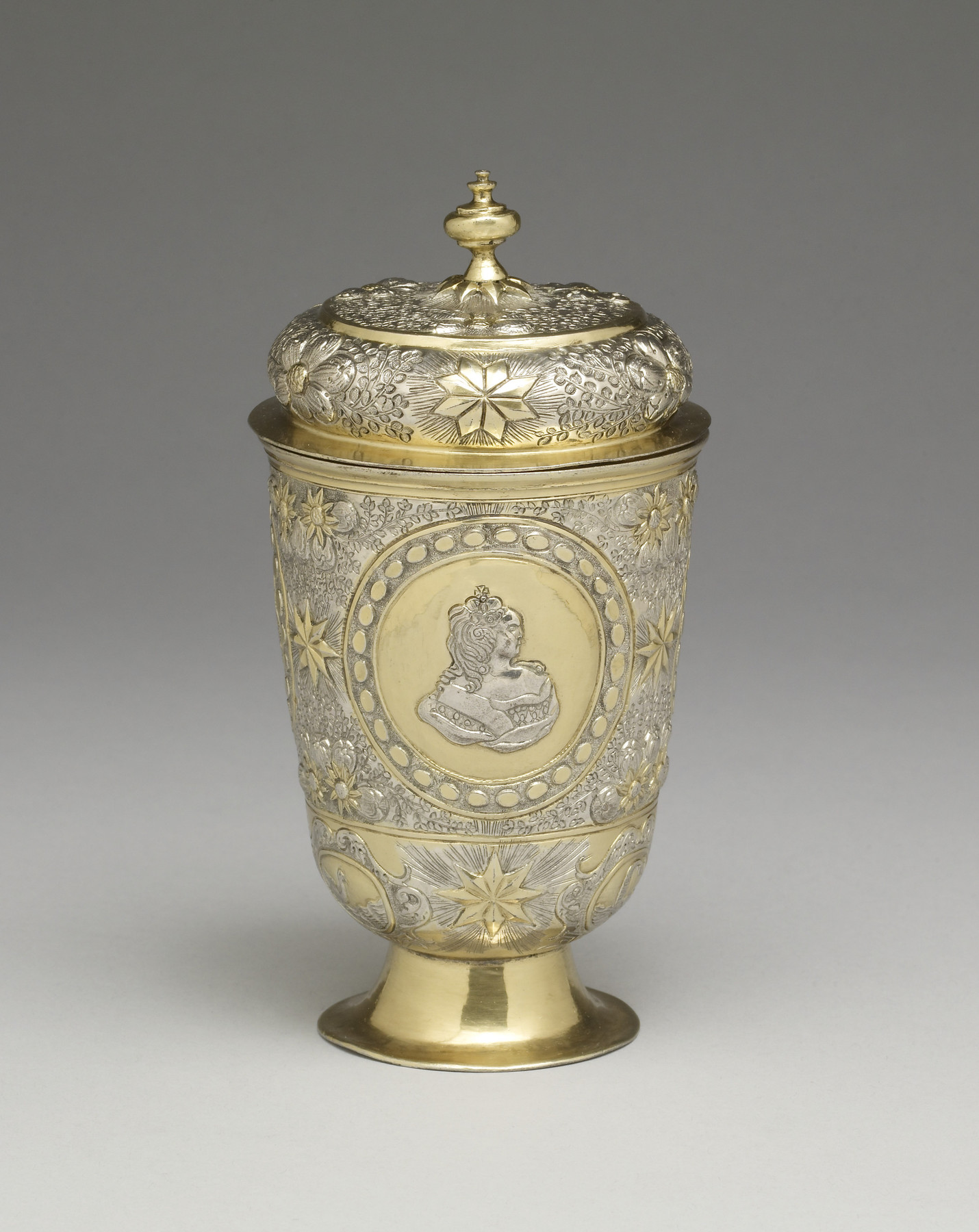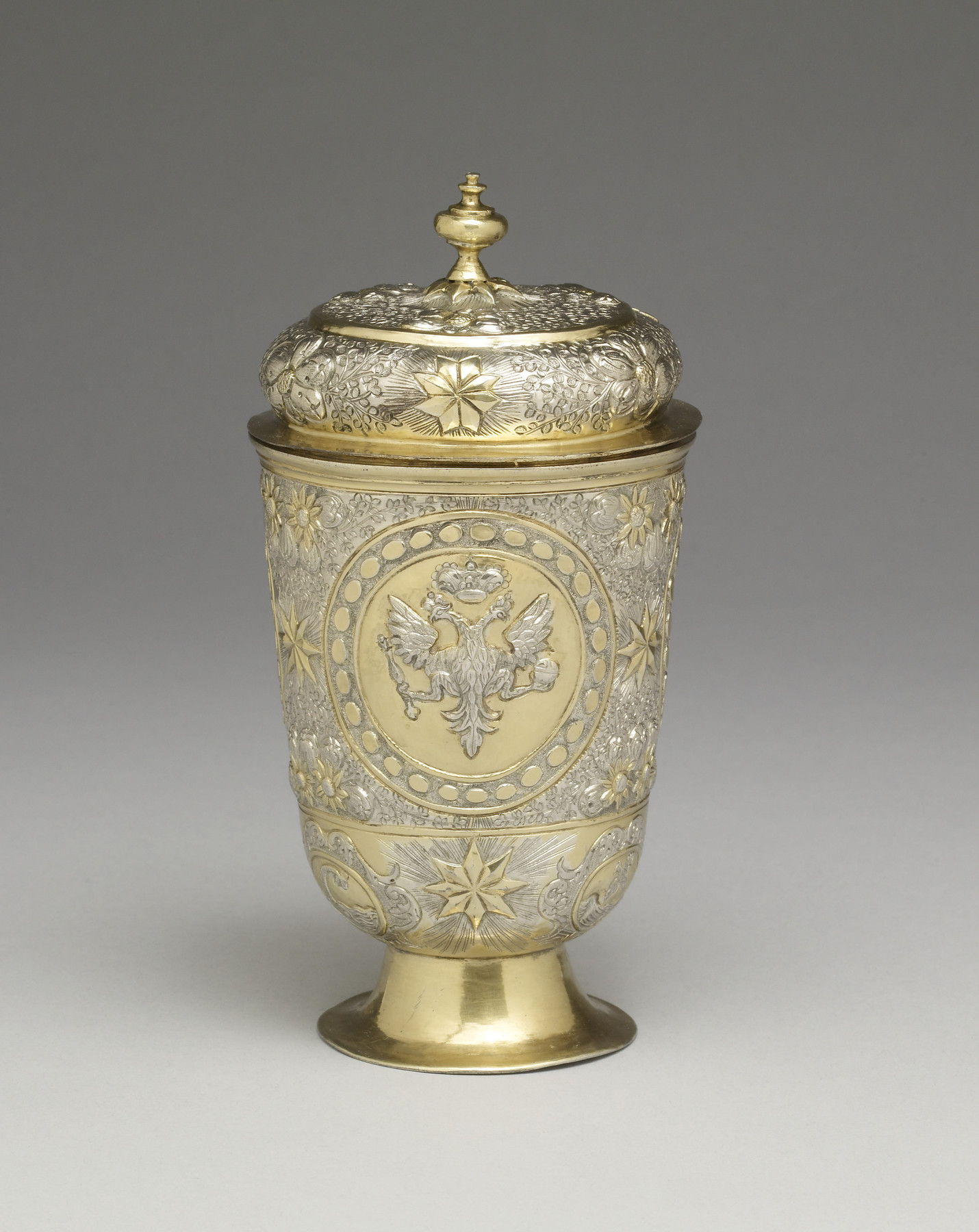Covered Cup
(18th and 19th Centuries )
The sides of this cup contain medallions with a profile portrait of Elizabeth I, Empress of Russia from 1741-1762, the double-headed eagle (emblem of the Russian Empire) and the empress's monogram EP (Elizabeth Petrovna) placed under a crown. The mask-like foliate design in the repoussé indicates a Dutch influence. The cup was made by an unknown silversmith who signed with the initials 'VD', active 1741-1753, and assayed by Egor Ivanov, active 1752-1758.
Cups such as this were presented to members of the empress's guard regiments.
Provenance
Provenance (from the French provenir, 'to come from/forth') is the chronology of the ownership, custody, or location of a historical object. Learn more about provenance at the Walters.
Alexandre Polovtsoff (Aleksandr Aleksandrovich Polovtsov), Saint Petersburg and Paris, by purchase; Henry Walters, Baltimore, 1929, by purchase; Walters Art Museum, 1931, by bequest.
Exhibitions
| 2017-2018 | Fabergé and the Russian Crafts Tradition: An Empire's Legacy . The Walters Art Museum, Baltimore. |
| 1959-1960 | Russian Art: Icons and Decorative Arts from the Origin to the Twentieth Century. The Walters Art Gallery, Baltimore. |
Geographies
Russia, Moscow (Place of Origin)
Measurements
H: 6 1/8 × Diam: 3 1/8 in. (15.6 × 7.9 cm)
Cup H: 4 5/16 × Diam:3 1/8 in. (11 × 7.9 cm)
Lid H: : 2 1/2 × Diam: 3 1/8 in. (6.3 × 8 cm)
Credit Line
Acquired by Henry Walters, 1929
Location in Museum
Not on view
Accession Number
In libraries, galleries, museums, and archives, an accession number is a unique identifier assigned to each object in the collection.
In libraries, galleries, museums, and archives, an accession number is a unique identifier assigned to each object in the collection.
57.815








